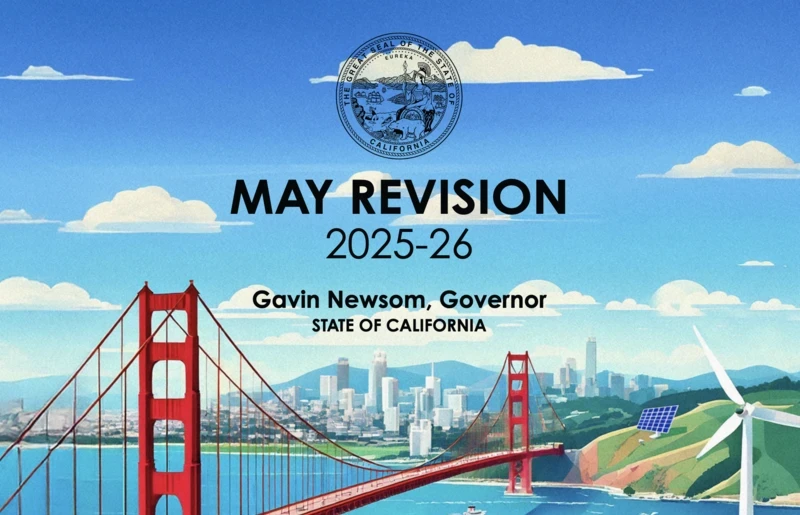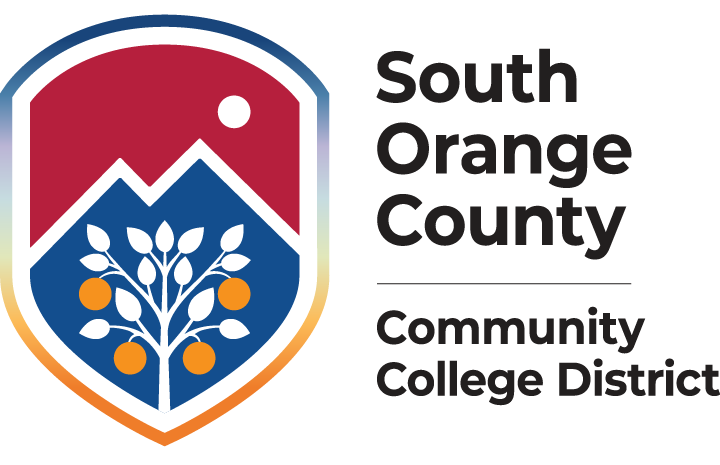
To: Colleagues
From: Ann-Marie Gabel – Vice Chancellor, Business Services
Date: May 15, 2025
Re: Governor’s May Revision to the 2025-26 Budget
Yesterday, Governor Newsom presented his May Revision budget proposal for the 2025-26 fiscal year which is much less positive than the January budget. The May Revision indicates that California has become the fourth largest economy in the world and thus is particularly impacted by the proposed federal tariffs and the economic uncertainty created by them. As a result, the State is projecting a $12 billion shortfall after incorporating downward estimates in revenues primarily due to the uncertainty around the federally imposed tariffs and an increase in expenditures primarily due to Medi-Cal costs. The May Revision addresses the $12 billion shortfall by making $5 billion in reductions to ongoing health programs; increasing revenues and borrowing $5.3 billion from special funds; and shifting $1.7 billion to future years.
Due to this downward projection, almost all State programs are experiencing either reduction in funding from the current year allocations and/or lower allocations than what were proposed in the January Governor’s Budget. The University of California and California State University Systems will receive a three percent decrease in funding from their current year allocation. Proposition 98 allocations have been impacted as well, although to a lesser degree. Overall, the May Revision projects $114.6 billion for Proposition 98 which is down from the January Governor’s Budget of $118.9 billion but still slightly up from what was received in 2024-25.
Community College Specifics
Community colleges will experience a modest $625 million increase in funding over the 2024-25 Enacted Budget going from $12.3 billion to $12.9 billion. However, when compared to the January Governor’s Budget for 2025-26, there is a decrease of $669 million going from $13.6 billion down to $12.9 billion. As detailed below, there has been a reduction in the cost-of-living adjustments (COLA) and several reductions to one-time funding. However, the May Revision does provide increased funding for enrollment growth and funding to eliminate the deficits imposed on non-basic aid districts.
The major components of the community colleges’ budget and the impacts on our District are as follows.
Unrestricted General Fund:
- $217.5 million (2.30%) cost-of-living adjustment (COLA) which is down from 2.43%. This will provide an estimated $5 million increase for our DRAC model.
- $139.9 million (2.35%) for enrollment growth which is up from 0.5%. Depending upon how the growth revenue is allocated, this could generate over $15 million of funding for our DRAC model since the District experienced unfunded FTES at Period 1 reporting of over 2,400 FTES. If this comes to fruition, we may need to reevaluate our Basic Aid allocations for 2025-26 when we present the Adopted Budget in August.
- $1.3 million (2.30%) cost-of-living adjustment (COLA) for mandated cost block grant program. This will provide an estimated $22 thousand increase for our DRAC model.
- $531.6 million cash deferral from 2025-26 to 2026-27 which will impact the cash received by Districts in May and June 2026. This proposal will have an extremely limited to zero impact on our District.
Governor’s May Revision to the 2025-26 Budget
Restricted Funds:
In addition to the cost-of-living adjustment for a select few categorical programs, the May Revision significantly changed the proposals for the new ongoing grant resources and one-time funds for investments in two technology initiatives and credit for prior learning programs from what appeared in the January budget. The capital outlay projects proposed in January remain the same. The estimated District allocations are based upon our current percentage of the statewide share.
Ongoing Resources:
- $26.2 million (2.30%) cost of living adjustment (COLA) for Adult Education, EOPS, CARE, DSPS, Apprenticeship, CalWORKS, and Child Care Tax Bailout. This will provide an estimated $283 thousand increase to our programs.
- $10 million (a reduction of $20 million) to expand the Rising Scholars Network which provides educational opportunities to students impacted by the criminal justice system. It is unknown whether our allocation for this program will be increased or not.
- $0 (a reduction of $29 million) for the creation of a systemwide common data platform.
- $5 million (a reduction of $2 million) for the creation and expansion of credit for prior learning policies. It is unknown how these ongoing resources will be allocated so no estimate has been made of the impact on our District
One-Time Resources:
- $0 (a reduction of $168 million) for completion of the Statewide Technology Transformation project which will streamline and standardize data collection across the system and create a cloud-based common enterprise system for use by all districts.
- $12 million (a reduction of $121.5 million) for the development of a common cloud data platform across the community college system. It hopes to “support the Career Education Master Plan by integrating the Program Pathways Mapper AI, eTranscript California, the Mapping Articulated Pathways platform, and the CSU Transfer Planner.”
- $40 million (a reduction of $53 million) to expand the existing credit for prior learning policies by “developing and beta-testing an outcomes based funding model that will support community college districts in the integration of credit for prior learning into the enrollment process.”
- $80.9 million to fund 31 capital outlay projects utilizing the newly approved Proposition 2 and the last of Proposition 51 funds that were approved by the voters in 2024 and 2016, respectively. Unfortunately, neither of our two Final Project Proposals (IVC Building A and SC Fine Arts Complex) were included within this allocation.
The District will incorporate these proposals into our DRAC model for the Tentative Budget and will discuss them at the District Resources Allocation Council (DRAC) on May 16, 2025. The Tentative Budget will be presented to the Board of Trustees for approval at the June 23, 2025, meeting.
At the State level, the budget talks will now pick up speed within the legislature. We can expect budget proposals from both the Senate and Assembly within the next couple of weeks. Any differences between those two budgets will go to the Conference Committee for resolution. It is anticipated that we will have a final State budget by the June 15 legislative deadline. We will incorporate all the changes appearing in the final State budget into our Adopted Budget which will be submitted to the Board of Trustees for approval at the August 25, 2025, meeting.
For individuals who want more information on the budget, read this Joint Analysis prepared by the California Community Colleges Chancellor’s Office, Association of Chief Business Officials (ACBO), Association of California Community College Administrators (ACCCA), and the Community College League of California (CCLC). You can also reach me via email at agabel@socccd.edu.
